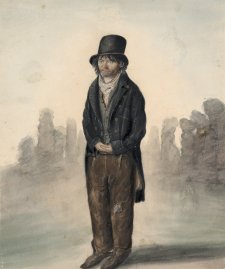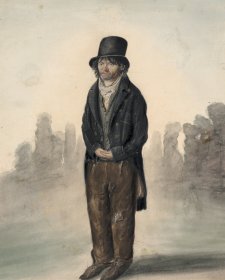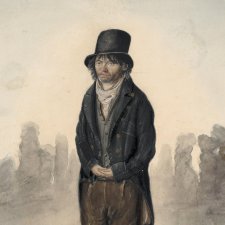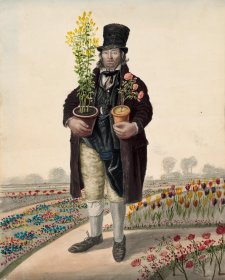At the turn of the 19th century, the town of Bury St Edmunds had a poverty problem. In 1807 James Oakes, one of the guardians of the poor, estimated that, of a total population of 7,500, almost 4,500 were paupers.
For the more comfortable citizens, this meant paying a substantial Poor Rate, and numerous efforts were made to keep the indigent from applying for parish relief. A benefit concert in the particularly fierce winter of 1799 raised over £100, which was spent on giving rations of tuppence worth of bread twice a week for a fortnight to 3,220 people. The following year, a soup kitchen was established, selling ‘perfectly nutritious’ soup three days a week at a halfpenny a pint.
The less charitably inclined preferred the stick to the carrot — in 1800, 140 ratepayers voted for public shaming by compelling the recipients of relief to wear a large letter ‘P’ on their shoulder. Other than Oakes’s dissenting vote, there is no contemporary record of popular response to the proposal, though it is probably no coincidence that, the following week, ‘the poor in the workhouse conducted themselves riotously and broke out of the House’.
Then, as now, most of the poor preferred work to the dole. Despite her slightly shabby cape, Ann or ‘Nanny’ Chapman seems to have managed to keep herself ‘off the parish’ all her life. When she died, her husband (some 12 years younger than she) moved into Clopton’s Asylum, an almshouse restricted to ‘widows and widowers upwards of sixty years of age [who] have lived with credit and reputation and have paid scot and lot [or parish tax]’.
William Chapman worked for many years as foreman for Charles Bullen, a Bury upholsterer, and his wife’s trade may have been related. The ghastly little animal carcass with a fly on its ear sticking out of her basket is not, as might at first be assumed, her dinner. According to her obituary, ‘Old Nan’ was in fact ‘well known in this town … as a buyer of Rabbit skins and hare skins’. Possibly the fur was useful for felting, but the most likely use of the skins was for boiling down into glue. Rabbit-skin glue is a very strong adhesive, and is an ingredient in the gesso commonly used in furnituremaking.
‘Old Nan’ evidently also did some public selling as well as buying, occasionally retailing calendars and other small articles.
Ann Chapman died in 1832 at the age of 81, making her 72 in the year of Dempsey’s portrait. She is buried in Bury, at St James’ Church.
Collection: Tasmanian Museum and Art Gallery, presented by C. Docker, 1956



30 June 2017
Those of you who are active in social media circles may be aware that through the past week I have unleashed a blitz on Facebook and Instagram in connection with our new winter exhibition Dempsey’s People: A Folio of British Street Portraits, 1824−1844.



Dempsey’s people: a folio of British street portraits 1824–1844 is the first exhibition to showcase the compelling watercolour images of English street people made by the itinerant English painter John Dempsey throughout the first half of the nineteenth century.



Visit us, learn with us, support us or work with us! Here’s a range of information about planning your visit, our history and more!